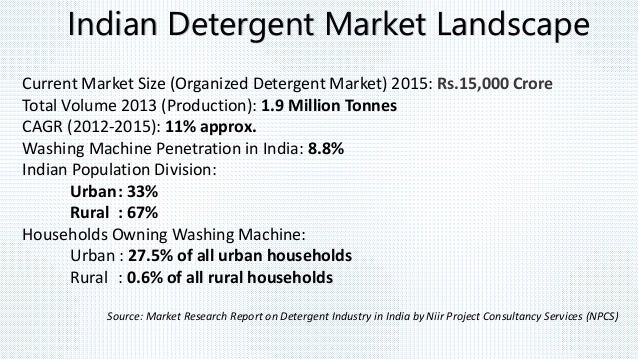2020. 3. 6. 14:16ㆍ카테고리 없음
Soaps Detergents: Manufacturing Soap and detergent production consists of a wide variety of control and packaging operations. The size and complexity of these operations differ from small plants making use of a few people to those with several hundred employees. Products range from large-volume sorts like laundry detergents that are utilized on a regular schedule to lower-voIume specialties for less frequent cleanup needs. Cleansing products arrive in three principal types: bars, powders and liquids. Some liquid products are usually therefore viscous that they are usually skin gels. The initial action in producing all three forms is the choice of raw materials.
Organic materials are usually chosen relating to several criteria, including their human and environmental safety, cost, compatibility with additional elements, and the form and efficiency characteristics of the completed item. While actual production procedures may vary from manufacturer to manufacturer, there are steps which are usually typical to all products of a similar form.
Let's start by looking at bar soap manufacturing and after that we'll review the processes used to make powder and liquid detergents. Traditional bar soaps are usually made from fats and oils or their fatty acids which are usually reacted with inorganic water-soluble bases. The main sources of fatty acids are meat and mutton tallow, while hand, coconut and hand kernel natural oils are usually the principal oils utilized in soapmaking.
The organic materials may become pretreated to eliminate impurities and to obtain the color, smell and functionality features preferred in the completed bar. The chemical procedures for producing soap, i actually.age., saponification of extra fat and oils and neutralization of greasy acids, are usually explained in the Chemistry section. Soap was made by the group kettle boiling technique until soon enough after World War II, when continuous processes had been developed.
Continuous processes are preferred today because of their versatility, velocity and economics. Both constant and set processes produce cleaning soap in liquefied form, called neat cleaning soap, and a useful by-product, gIycerine (1).
The glycerine is certainly recovered by chemical treatment, adopted by evaporation and refining. Refined glycerine is certainly an important industrial materials utilized in food items, cosmetics, medicines and several other items. The next processing phase after saponification or neutralization is usually drying. Vacuum squirt drying is certainly utilized to transform the neat cleaning soap into dried out soap pellets (2).
The moisture articles of the pellets will vary depending on the preferred attributes of the cleaning soap bar. In the final processing phase, the dry cleaning soap pellets complete through a bar soap completing line. The 1st unit in the series is certainly a mixing machine, called an amaIgamator, in which thé cleaning soap pellets are combined together with scent, colorants and all other ingredients (3). The combination is after that homogenized and processed through rolling mills and refining plodders to obtain thorough mixing and a standard consistency (4). Finally, the mixture is constantly extruded from the plodder, cut into bar-size models and rubber-stamped into its last shape in a cleaning soap push (5). Some of today's pub soaps are usually called 'combo pubs,' because they get their cleaning activity from a combination of soap and synthetic surfactants. Others, called 'syndet pubs,' feature surfactants as the primary cleansing substances.
The running methods for processing the artificial base components for these pubs are very various from those utilized in conventional soapmaking. However, with some minimal adjustments, the finishing line apparatus will be the exact same. Powder detergents are created by spray drying, agglomeration, dry combining or combos of these methods. In the aerosol drying process, dried out and liquefied ingredients are first mixed into a slurry, or solid suspension system, in a container called a crutcher (1). The slurry is definitely warmed and after that pumped to the top of a tower system where it is certainly sprayed through nozzles under higher stress to create little droplets. The droplets fall through a present of warm air, forming hollowed out granules as they dry (2).

Liquid Detergent Formula
The dried out granules are collected from the bottom level of the squirt tower where they are usually screened to attain a fairly uniform size (3). After the granules have long been cooled, high temperature sensitive ingredients that are not suitable with the spray drying temperature ranges (like as bleach, enzymes and fragrance) are added (4). Traditional aerosol drying generates relatively low density powders. New technologies has allowed the soap and soap industry to reduce the surroundings inside the granules during squirt drying to attain increased densities.

The higher denseness powders can become loaded in much smaller packages than were needed previously. Agglomeration, which qualified prospects to increased density powders, consists of blending dry raw materials with liquefied ingredients. Helped by the presence of a liquefied binder, moving or shear mixing up leads to the ingredients to clash and adhere to each various other, forming larger particles. Dry out mixing up or dry blending is definitely utilized to blend dry uncooked materials. Small quantities of liquids may also be added. Both group and constant blending processes are used to manufacture liquefied and gel cleaning up items.
Stabilizers may become added during manufacturing to make certain the uniformity and stability of the completed item. In a standard continuous procedure, dried out and liquid ingredients are included and blended to a standard mixture using in-line or static mixers. Lately, more concentrated liquid products have been released. One method of creating these products uses new high-energy mixing procedures in mixture with stabilizing agents. The final stage in the manufacture of soaps and detergents can be packaging. Bar soaps are either wrapped or cartoned in solitary packs or multipacks.
Liquid Soap Making Formula Pdf

Soap Making Calculator Formulas
Detergents, like home cleaners, are usually packaged in cartons, bottles, pouches, luggage or cups. The choice of packaging components and containers involves factors of product compatibility and stability, cost, bundle safety, strong waste impact, shelf charm and simplicity of use.